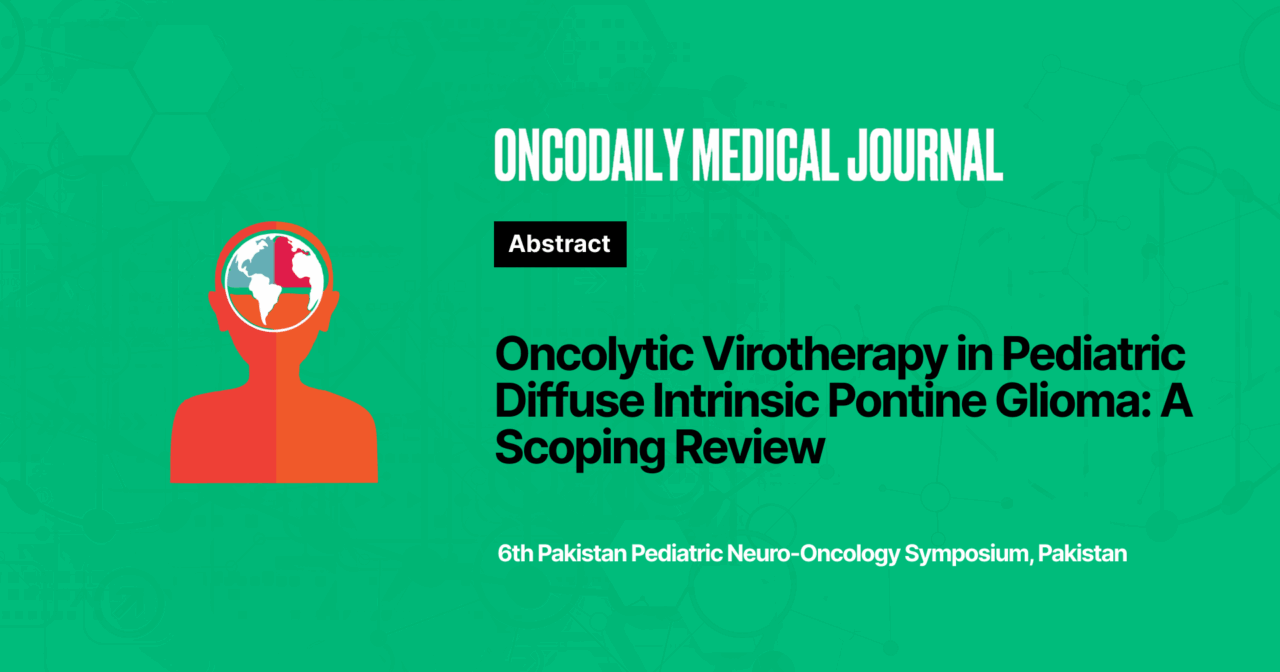Oncolytic Virotherapy in Pediatric Diffuse Intrinsic Pontine Glioma: A Scoping Review
Abstract
Introduction: Diffuse midline glioma H3K27-altered, also known as Diffuse Intrinsic Pontine Glioma (DIPG), has a median survival of 9–12 months. Standard chemotherapies offer negligible benefit, driving the search for transformative approaches. Oncolytic viruses (OVs), including DNX-2401 and VCN-01, exploit tumor-selective replication and immune modulation to overcome the “immune-cold” microenvironment of DIPG. This scoping review systematically summarizes all clinical data on OV therapy for DIPG, highlighting efficacy, safety, and future directions.
Methodology: We performed a systematic search of PubMed, Scopus, Web of Science, and ClinicalTrials.gov from database inception to April 2025, using the terms “Diffuse Intrinsic Pontine Glioma,” “oncolytic virus,” and “virotherapy.” Clinical studies, including trials, case series, and case reports, were included with no language restrictions. Review articles, editorials, conference abstracts, and protocols were excluded.
Results: Nine studies (n=57 patients) met inclusion criteria. DNX-2401 was the most studied OV (67%), primarily administered via stereotactic intertumoral injection using dose-escalation protocols (1×10¹⁰ to 5×10¹⁰ viral particles). Across trials, no dose-limiting toxicities were reported; most adverse events were Grade 1–2 and self-limiting. Median overall survival ranged from 16.3 to 17.8 months in DNX-2401 cohorts, exceeding historical benchmarks. Radiographic responses included up to 75% disease stabilization, with partial responses noted in three patients. Immune profiling showed enhanced T-cell infiltration and modulation of the tumor microenvironment. Notably, one patient remained alive and radiographically tumor-free at 38 months post-diagnosis, representing a rare durable response. Key challenges included blood–brain barrier penetration, pseudo-progression, and limited data on repeated dosing.
Conclusion: Oncolytic virotherapy, specifically DNX-2401, shows early promise in safety and efficacy for treating DIPG. Further optimization of delivery strategies (e.g., convection-enhanced delivery, stem-cell carriers) and integration with combinatorial immunotherapies are essential to advance this therapeutic approach. Standardized trial designs will be critical for enabling future meta-analyses.
Conflict of Interest: None
Funding: None
Disclosure statement: None
License: This article is published under the terms of the Creative Commons Attribution 4.0 International License (CC BY 4.0).
© Naureen Mushtaq, 2025. This license permits unrestricted use, distribution, and reproduction in any medium, provided the original author and source are credited.





